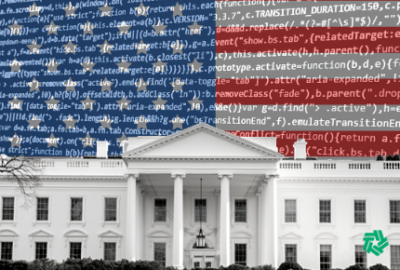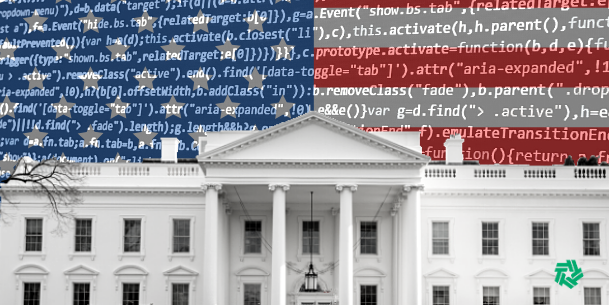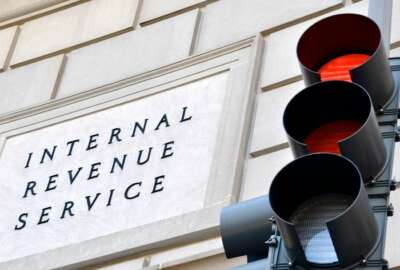Federal CIO Martorana says agencies adjusting to TMF 2.0 model
Federal CIO Clare Martorana has been briefing lawmakers about awards and the impact of the Technology Modernization Fund to ensure transparency and accountability.
Don’t call the $10.5 million infusion of funding the Department of Veterans Affairs received to modernize its identity management platform an “award” or a “loan.”
Federal Chief Information Officer Clare Martorana prefers to call it an “investment” by the Technology Modernization Fund Board. Martorana said the TMF Board is making an investment in VA to help veterans have seamless and secure access to digital services and benefits.

“We are used to simple and seamless interactions in our personal lives. I can log into Grubhub or I can do multiple things and utilize some of the technology available on my devices to have a simple experience. It isn’t that way in a lot of federal enterprises. We can’t transit from agency to agency and have that same identity move with us,” Martorana said on Ask the CIO. “Part of the opportunity is in agencies that have multiple identity systems, making those seamless, safe and secure. We know that we can then build on those lessons learned and actually start to have them help us as we transit across agencies.”
This is why the TMF has evolved from a “loan” or an “award” to that investment, especially given the $1 billion it received under the American Rescue Act Plan in 2021.
Raylene Yung, the executive director of the TMF program management office at the General Services Administration, said an investment like the one in VA is as much about modernizing an agency’s services as it is demonstrating the power of shared services across government.
“The first part of it is really building out that shared service, making sure that it works and can scale. That’s a great example of login.gov, which actually is used by over 40 million users across a few dozen federal agencies,” she said. “Then there’s that other side of the agency adoption of a shared service and that’s a great example of what the VA is doing. You have the two sides of the coin, and together through developing the shared service and then agencies adopting the shared service, that’s when you really get that governmentwide benefit. You can kind of have that build once and use many leverage that you get out of every taxpayer dollar that goes into both sides.”
Through the TMF investment, VA will move away from a fragmented identity and access management approach for veterans and their care givers. VA will use the TMF to implement Login.gov as a single, modern and easy to use sign-in service.
“[T]his project will support the seamless transition of existing users to Login.gov. Second, VA will create an in-person identity verification option for veterans unable to sign up online. Finally, VA will pilot physical security keys for multi-factor authentication to improve accessibility and make digital services more secure,” the TMF website stated. “This investment will not only improve the experience of veterans accessing VA benefits and services, but also reduce VA costs and the risk of fraud.”
Ninth award under TMF since September
The award to VA is the TMF Board’s ninth award to seven agencies from that $1 billion windfall. The board made six awards totaling $311 million to four agencies in September, and then made two others totaling another $9 million.
Yung said the board received 130 proposals from 60 agencies and components totaling over $2.5 billion demonstrating a huge demand to accelerate projects.
The influx of proposals were both good and bad for the board.
On the good side, Yung said the board continually evolves its processes and is hiring more staff to help agencies be more successful with their submissions.
The program management office now includes more than 15 employees and more are on the way. Yung said her office now offers more experience and expertise in building technology systems, user research and design, and, of course, cybersecurity.
“We’re continuously learning from engaging with agencies, the new proposals that we read and the new investments that we make. This unprecedented influx of proposals really taught us a lot more about what agencies are seeking to do, which then informed our criteria, our guidance and all of that,” Yung said. “We really do have this emphasis on not just the older proposals that may have focused on the technology modernization itself, saying we’re going to take that system from the old one to the new one. I think now what we’re really thinking and really asking agencies to show is what is that end user impact? It’s not just about the technical system improving, but it’s what does that achieve? How does the public’s experience with government meaningfully improve?”
Money moving slowly
But on the bad side, the proposal submissions were not always up to par causing some delays in getting the money out the door, which, in turn, is frustrating lawmakers and agency leaders.
Martorana said when the Office of Management and Budget issued new TMF guidance in May that changed the repayment requirements, the quality of proposals declined.
“We went from a 1.0 model that was in existence for three-and-a-half years and did those 11 investments to a 2.0 model. Our 2.0 model puts technologists at the front end of the investment review process and partnering with the board. The technologists are ensuring that these proposals are really worthy from a technical perspective of the investment that they’re going in the right strategic direction, that they’re utilizing best practices, that the teams are capable of actually delivering, that they have acquisition vehicles in place and all of the fundamentals that are needed for an investment, not only to get up and running, but to be capable of delivering the impact for the mission or for the customers,” she said. “We’ve really been able to see agencies making some internal investments, like doing a minimum viable product, doing some rapid prototyping, then coming to us and saying, ‘we have these key learnings now we need to actually accelerate our IT modernization.’ That makes it a lot easier for the board to make an investment decision because there’s a proven model at an agency.”
She added the initial set of projects lacked coordination within agencies.
“We had several agencies that submitted component submissions that didn’t go through a process with their CIO. We’d call the CIO to ask and they didn’t know anything about the proposal,” Martorana said. “There was a lot of enthusiasm from agencies and from programs in agencies that didn’t have that same upfront rigor that a prior TMF proposal went through.”
More transparency with Congress
The board’s long timeframe in making the awards or investments hasn’t gone on unnoticed by Congress.
In the 2022 omnibus bill, Congress zeroed out the TMF pointing to the more than $700 million remaining in the fund in March before the last three awards.
Martorana said OMB and the board recognize they need to focus on transparency and accountability to demonstrate the fund’s impact and why continued investment is important.
“We put a process in place that we announce in advance of making the investment award. We do stop at the Hill and make sure that our stakeholder partners there are aware of the investment and understand the thesis,” she said. “We do a lot of work prior to going to the Hill to make sure we’re working inside OMB to make sure we don’t, we aren’t making duplicate investments and are really rigorous in that process because we want to make sure that the TMF funding is a partnership between Congress and the executive branch.”
She added OMB also is briefing committees and lawmakers to share insights into the trends they are seeing from agency submissions.
“It gives us a really good indication of what some of the demand is, what that pent up demand is across agencies, and then making sure that we are able to think about that as we’re going through our normal budgeting and appropriations process,” Martorana said.
Copyright © 2025 Federal News Network. All rights reserved. This website is not intended for users located within the European Economic Area.
Jason Miller is executive editor of Federal News Network and directs news coverage on the people, policy and programs of the federal government.
Follow @jmillerWFED








